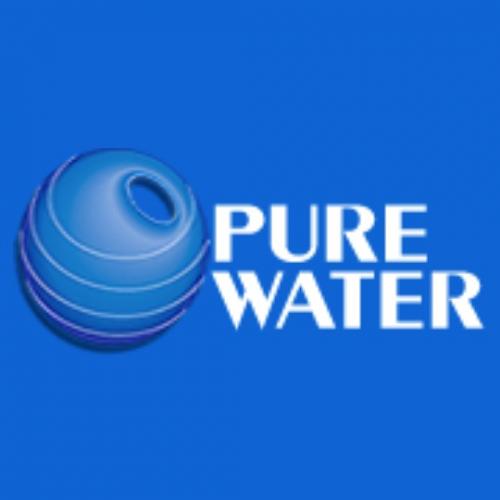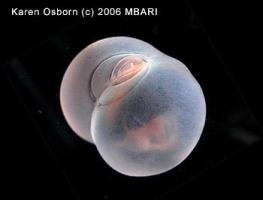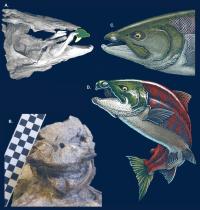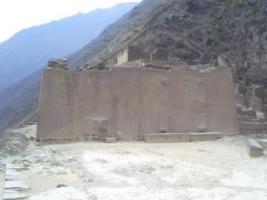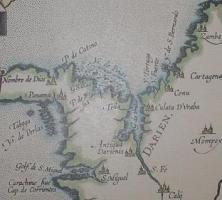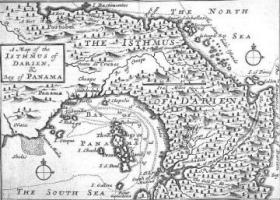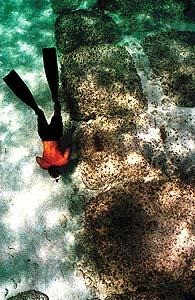The Pure Water Newsletter #4, 1999 Issue

The Pure Water Newsletter
#4, 1999 Issue
"Improving the Quality of Life trough the Quality of Water."
News and Views about Water and Health from http://www.purewaterinc.com/
>> Note: This newsletter is sent only to subscribers who requested it. This publication may be freely redistributed if copied in its ENTIRETY <<
IN THIS ISSUE
- Welcome!
- Enter the Lucky Draw!
- Water in the News
- Featured Article Child Cancer Clusters and Contaminated Drinking Water in the US By Donald Sutherland Member of the Society of Environmental Journalists
- Distilled Water Tip
- Previous Newsletter
Welcome!
Welcome to the fourth edition of The Pure Water Newsletter brought to you by Pure Water, Inc! Every month or so we will bring you up to date on Drinking Water and Health issues surrounding your drinking water.
Our online family keeps growing and we thank everybody for letting their friends and family now about our newsletter and web site.
Please visit us at the Pure Water, Inc web site for new contests, news headlines, product info, business opportunities etc. http://www.purewaterinc.com/
>>>>>Enter Our Competition for a chance to win this book!<<<<<<
Prescription for Nutritional Healing: James F Balch, M.D. and Phyllis A. Balch, C.N.C.
Complete and authoritative, this guide to dealing with health disorders through nutritional therapy has been co-authored by a medical doctor and a certified nutritionist. Together they provide all the information needed for the average person to design a personal nutrition program. Learn why pure distilled drinking water is vital to your health.(The closing date is November 29, 1999 at midnight CST.)
http://www.purewaterinc.com/
Business Opportunity
Pure Water Brandoffers a number of business opportunities to anyone wanting to get into the drinking water business. Whether you want to start a bottled water plant, a water store, or get people involved with the best drinking water systems for the home or office, Pure Water,Inc. can give you that opportunity.
http://www.purewaterinc.com/html/business_opportunities.htm
Water in the News!
(AOL Users: You may have to cut/paste the URL's below into your browser in order to view the online articles)
ENN News - Factoids What you need to know about water
The Clean Water Act has been successful over the last 25 years at controlling water pollution from factories and sewage plants, but 40 percent of the nation's waters are still too polluted for fishing and swimming, according to EPA. Here's what else you need to know and what you can do, about today's water problems.
http://www.enn.com/enn-features-archive/1998/03/030698/clnwtr.asp
CBS - Tests Dental Waters
The dental industry has known about the problem for nearly 30 years. The water your dentist squirts in your mouth may be unfit for drinking or may make you sick. CBS News This Morning's Julie Chen reports on the results of its own test.
http://www.cbsnews.com/story_192154.html
ABC News - Seeking a Reason for Water Pollution
From E. coli bacteria on Milwaukee lakefronts to the mysterious presence of human- originated viruses in the waters off southern California's sandy playgrounds, the discovery of such invisible threats is forcing the United States to rethink how to deploy public funds to clean up rivers, lakes, and beaches.
http://abcnews.com/sections/science/DailyNews/beach_pollution990921.html
CNN - H2O and your health
You've heard it a thousand times: Drink eight glasses of water a day. Even though this is just an estimated amount for most people, you don't do it. You're drowning in excuses you don't like the taste, it's not convenient, you never remember. No big deal, you think it's not affecting your health. You're all wet. Getting enough water is crucial to your health. You couldn't survive without it. Yet surveys indicate that many Americans don't drink enough.
http://cnn.com/HEALTH/mayo/9909/23/h2o.health/
ENN - Salt plagues Australia drinking water
In the latest revelation in Australia's dryland salinity crisis, unless new agricultural practices are adopted in southern Australia, residents there will need to buy water or find new water sources because their water will be too salty to drink, a science briefing forum was told in state parliament.
http://www.enn.com/enn-news-archive/1999/10/100199/dryland_6059.asp
Child Cancer Clusters and Contaminated Drinking Water in the US
By Donald Sutherland
TOMS RIVER, NEW JERSEY, September 16, 1999 - Linda Gillick lives in the small town of Toms River, New Jersey with her twenty year old son Michael who since the age of three suffers from neuroblastoma (a brain cancer). Unfortunately, Michael is one of 103 children from the township who are part of the nation's largest child cancer cluster.
http://www.tr-teach.org
"In our situation drinking groundwater contamination from industrial toxic waste is definitely a potential cause," says Gillick, executive director of the not-for- profit Ocean of Love.
State environmental officials have discovered over 4,500 drums of toxic liquid from Union Carbide Corporation were dumped in the Dover Township municipal landfill and a local farm one mile north of the wellfield used for drinking water for Toms River. A closed chemical plant owned by Ciba Specialty Chemicals which was declared a Superfund toxic waste site is also part of the investigation.
"The government thought the drinking water could be cleaned up by filtering it with air filters but what people don't realize is you have thousands of chemicals being produced without toxicological testing and drinking water regulators are only required to check for 80 substances," says Gillick.
"Our standards for safeguarding drinking water aren't keeping up with the chemicals being produced," she says.
Child cancer represents the largest killer of children in the United States (outside of accidents) according to the National Cancer Institute and the National Childhood Cancer Foundation and it is on the rise.
http://cancernet.nci.nih.gov and http://www.nccf.org and http://www-seer.ims.nci.nih.gov/Publications/PedMono
Brain, nervous system cancers, and acute lymphocytic leukemia represent the majority of cancers attacking children, and clusters of these cases are occurring in regions where drinking water has been contaminated by carcinogenic volatile organic compounds (VOCs) discharged by industry and municipalities into underground sources of drinking water (USDW).
VOCs identified by the Environmental Protection Agency as potential cancer causing agents are associated with the child cancer clusters in Toms River, New Jersey, Winona, Texas, Port St.Lucie, Florida, and Woburn, Massachusetts.
In the Woburn cluster made famous by the book and the movie "A Civil Action", 21 children contracted leukemia in a town where drinking groundwater was contaminated from a shallow industrial injection well and dump.
http://www.civil-action.com and http://www2.shore.net/~dkennedy/woburn.html and http://www.magnet.state.ma.us/dph/beha/woburn.htm
State epidemiologists in Winona, Texas are investigating 14 cases of child cancer in a township of 500 people where a hazardous deep injection well (Class 1 UIC well) was contaminating the groundwater and air with VOCs and radioactive waste.
http://www.dallasobserver.com/1998/091098/feature2-1.html
In Port St.Lucie, Florida 29 children have contracted brain tumors and nervous system cancers in a region where industrial and municipal underground injection wells are illegally discharging into USDW.
http://www.sun-sentinel.com/news/daily/detail/0,1136,500000000005012,00.htm and http://www.stluciecounty.com/news/1999/0131/01311999s4.htm http://www.ficus.usf.edu/exhibits/injection/default.htm
Child cancer clusters are also being investigated in Rochester (Monroe County), New York, Christian County, Illinois, and McFarland, California.
http://www.seattletimes.com/extra/browse/html97/canc_081597.html http://angelsofhope.com
Toxic Waste from Underground Injection Wells and Dumps Enters USDW
The scale of toxins entering drinking groundwater supplies through the Environmental Protection Agency's underground injection control (UIC) program is huge.
http://www.edf.org/links/scorecard and http://www.scorecard.org
Over 60 percent of the land disposed liquid hazardous waste in the US is injected underground via 600 government permitted Class 1 UIC wells according to the not- for-profit Ground Water Protection Council, and the EPA says nationwide there are over 1 million shallow Class V UIC wells used by industry, farms, and businesses to discharge toxins into USDW.
http://www.epa.gov/ogwdw/uic.html and http://www.site.net and http://www.ficus.usf.edu/exhibits/injection/default.html http://gwpc.site.net/factshee.htm
Toxins are also entering groundwater in increasing amounts from hazardous waste dumps.
A 1997 federal Agency for Toxic Substances and Disease Registry (ATSDR) report, "The Toxicological Hazard of Superfund Hazardous Waste Sites", analyzed over 1,300 Superfund sites listed by the EPA on the National Priority List (NPL) and found over 41 million Americans live within four miles of these toxic land dumps where an increase in toxic waste exposure pathways is at a level threatening public drinking groundwater. The report also cites Office of Technology Assessment (OTA) estimates of potentially 436,000 hazardous waste sites nationwide.
http://www.atsdr.cdc.gov/toxhazsf.html
US Government Refuses to List Investigated Child Cancer Clusters:
Historically cluster investigations have been used by scientists to identify environmental factors causing a disease such as the outbreak of Legionnaire's disease in the 1970's from contaminated water in air conditioning ducts.
http://cancernet.nci.nih.gov/clinpdq/risk/Cancer_Clusters.html
However, state and federal epidemiologists investigating contamination of drinking water by carcinogenic VOCs from underground injection wells and hazardous waste dumps claim they couldn't find any evidence the contaminating carcinogens were a factor in any child cancer cluster. They claim a true child cancer cluster has never been proven in the US.
http://cis.nci.nih.gov/fact/3_58.htm
"A cluster investigation is designed to answer is there too much cancer and not why it happened," says Barry Wilson, an epidemiologists with the Texas Cancer Registry who investigated the Winona, Texas child cancer cluster.
"The true term for a child cancer cluster is is it meaningful," says Wilson," and meaningful is defined if there is an excess in a geographic area in a particular time period, if it is statistically significant by sex, age, race, if all groups were equally exposed, is there an exposure pathway, and then if there is biologically plausibility to cause that cancer."
"I've done over 500 of these cluster investigations, and we have nothing in Texas that meets the criteria of a meaningful child cancer cluster," he says.
State and federal government cancer registries refuse to list child cancer clusters under investigation even though epidemiologists have cited large statistical numbers of specific cancer outbreaks in the towns Toms River, Winona, Port St.Lucie and Woburn.
http://www.ncsl.org/programs/asi/cancer.htm
"Most scientists don't see value in studying child cancer clusters," says Dr.Holly Howe, executive director of the North American Association of Central Cancer Registries.
http://www.naaccr.org
"Usually child cancer clusters involve small numbers of cases and most studies funded require several hundred cases for proper statistical inquiry to calculate level of risk," she says.
"We don't know what causes child cancer clusters but the environment and exposure to carcinogens is not a strong contributor," says Dr.Howe.
Environmentalists and concerned doctors disagree.
Federal Environmental Regulations Not Designed to Protect Children:
"I have no doubt certain VOCs in drinking water can cause cancer in children," says Dr.Philip Landrigan, chair of the department of community and preventive medicine at Mount Sinai School of Medicine, in New York City, and a former special adviser to the Office of Children's Health Protection of the EPA.
"I think there is a strong potential for VOCs in drinking water to have caused the cancer in the child cancer clusters in Toms River, Winona, Woburn, and Port St.Luice," says Dr.Landrigan.
"The concern we have is that drinking water standards are not protective of the public's health particularly children," says Carolyn Poppell, program coordinator on safe drinking water for Physicians for Social Responsibility.
http://www.psr.org/reportcard.htm
The Environmental Protection Agency has designated a list of chemicals, metals, and known carcinogenic volatile organic compounds (VOCs) to be monitored in drinking water for established maximum contaminant levels (MCLs) by utilities.
htttp://www.epa.gov/safewater/mcl.htm and http://www.epa.gov/ogwdw/dwh/t-voc.html and http://www.epa.gov/safewater/dwhealth.html and http://www.epa.gov/ostwater/Tools/dwstds_s.html and http://www.epa.gov/ncea/new.htm
Critics of the EPA's MCL drinking water monitoring list for toxins say it only monitors for 80 substances while there are over 75,000 chemical produced in the United States and only seven percent of the 2,700 most widely used chemicals have data on their health effects on humans.
http://www.epa.gov/opptintr/chemrtk and http://www.myworld.org/pubs/edf-letter/1998/sep/K_chem.html
http://www.myworld.org/pubs/Report/ToxicIgnorance/indes.html
http://www.ecomall.com/activism/chem.htm
http://www.pirg.org/enviro/toxics/rtk
http://www.calepa.cahwnet.gov/oehha/docs/getlist.htm
"The EPA's MCLs in drinking water are not designed to protect children because they are extrapolated from animal studies and based on an adult male's body weight and water consumption," says Poppell.
http://www.psr.org
"Infants and children are very vulnerable to exposure to known carcinogenic VOCs in drinking water, yet there are no environmental regulations based on studies to specifically protect them," she says.
According to child cancer activists chemical corporations are financially and politically pressuring health organizations and the EPA to keep it that way.
"There currently isn't enough scientific data to connect child cancer to chemical exposure," says Lois Gibbs, executive director of the not-for-profit Center for Health, Environment and Justice.
http://www.essential.org/cchw/
"The Fortune 500 petrochemical industries would have the most to lose if the link is made between chemicals and child cancer, and they design studies with their funding so there will not be conclusive evidence to make that link," she says.
Government health organizations and the EPA claim it isn't so.
No Short Term Studies of Toxic Risk of VOCs to Children:
Government health and environmental officials insist current drinking water standards do protect children, but state there have not been studies conducted on short term effect of chemical carcinogens exposure to children or on child cancer clusters.
"Most VOCs zip out of the body and don't accumulate (except for DDT)," says Jeanette Wiltse, director of the Health & Ecological Criteria Division of the Office of Science & Technology at the EPA's Office of Water.
"Some MCLs in drinking water are tailored for children (lead and nitrate), but we look at the effect of carcinogens through an epidemiological approach which is total dose over an adult's life time," says Wiltse.
According to Jeanette Wiltse if a child cancer cluster was proven to be caused by exposure to chemical carcinogens then the government would conduct an epidemiological study for a new risk assessment similar to those for lead and nitrate.
"I don't know where they have nailed a chemical contaminant in drinking water to a child cancer cluster, but if we had information on a suspected compound we would do a short term exposure study," says Wiltse.
Most studies cited by government organizations show cancer in children is due to genetic problems, but funding is lacking for environmental chemical exposure to children.
"There haven't been a lot of studies on child cancer clusters, and you need many cases and funding, and they don't exist," says Dr.Howe.
"Our investigations have been criticized as being flawed because our methods haven't once proven an environmental connection with cancer but maybe we are just not smart enough yet," says Wilson.
Government Response to Toxins Threatening Children's Health:
President Clinton on April 21, 1997 released Executive Order 13045: Protection of Children from Environmental Health Risks and Safety Risks which states: http://www.epa.gov/children/executiv.htm
"Based on a growing body of scientific knowledge demonstrating children may suffer disproportionately from environmental health risks and safety risk."
"Each federal agency shall make it a high priority to identify and access environmental health risks and safety risks that may disproportionately effect children and shall ensure that its policies, programs, activities, and standards address disproportionate risks to children that result from environmental health risks or safety risks."
These risks are due to children's developing biological state and consumption of more food, fluids, and air in proportion to their body weight than adults according to the executive order.
In 1997 the Environmental Defense Fund (EDF) released a report claiming there was a lack of publicly available data on the health effect of 2,700 US high production volume (HPV) chemicals.
On October 9, 1998 Vice President Gore announced an agreement between the Chemical Manufactures Association (CMA), the Environmental Protection Agency, and EDF for companies to voluntarily test the human health and environmental effects of HPV chemicals they produce and complete testing by the year 2004.
http://www.mapcruzin.com/scruztri/docs/chemrtk_agreement.htm and http://www.cmahq.com/cmawebsite.nsf/pages/newsinfo
The 1996 Safe Drinking Water Act amendments requires the EPA to release a list of contaminants not subject to the current national primary drinking water regulations, and on March 2, 1999 the EPA puplished a list of new contaminants (Drinking Water Contaminant Candidate List, or CCL).
http://www.epa.gov/children/six.htm
http://www.epa.gov/taskforc.htm
http://www.epa.gov/OGWDW/ccl/ccl_fr.html
"The final EPA CCL of 50 chemicals and 10 microbiological contaminants is not a regulation but an agenda of priorities for development of new regulations for contaminants in drinking water over the next five years," says Evelyn Washington, assistant branch chief in the Targeting & Analysis Branch of the EPA's Office of Ground Water and Drinking Water.
This year the US Geological Survey (USGS) National Water Quality Assessment Program (NAWQA) has initiated a new project in cooperation with the American Water Works Association to address VOC's in drinking water aquifers in greater detail.
http://wwwsd.er.usgs.gov/nawqa/vocns/datasum91.html
http://wwwsd.cr.usgs.gov/nawqa/vocs/
"VOC's in USDW are a concern for NAWQA because VOCs, such as solvents, fuels, fuel additives, and disinfection by products are frequently detected in ground water and many VOCs have been identified as having carcinogenic or other adverse health effects," says Glenn G. Patterson, a USGS hydrologist with NAWQA.
"Generally, anything that can cause cancer in adults can cause cancer in children and children are considered more susceptible to cancer because their cells are multiplying more rapidly than those of adult's," says Patterson.
In January 1999 the EPA National Center for Environmental Assessment's Science Advisory Board (SAB) recommended the guidelines for carcinogen risk assessment specifically address children's health.
http://www.epa.gov/ncea/new.htm
"We haven't investigated child cancer clusters, and MCLs are still determined over an adults life time not a child's," says Jackie Moya, spokeswoman for the EPA's National Center for Environmental Assessment.
The gap between government's actions to respond to child exposure to environmental carcinogens and policy making to protect their health has Dr.Philip Landrigan concerned.
"The question is where our society's priorities are," he says.
"Do you act on the presumption some chemicals in drinking water cause child cancer based on tests on animals or wait for an outbreak of cases."
By Donald Sutherland, Member of the Society of Environmental Journalists
donaldsutherland-iso14000@worldnet.att.net
Distilled Water Tip
Cooking Vegetables with Distilled Water.......
There is a noticeable improvement in the cooking of potatoes and other fresh vegetables when using distilled water. There is NO discoloration in the potatoes and naturally, you are NOT introducing any contaminants into the food. All fresh vegetables such as broccoli, asparagus, cauliflower and so on should also be cooked or steamed in pure distilled water. Soups that call for water will be made safer and tastier with pure distilled water. You will also find that distilled water comes to a boil at a slightly lower temperature than tap water. In addition to saving a little time, there is s slight savings in energy costs.
Previous Issue
- Welcome!
- Water in the News
- Featured Article Hazardous Underground Injection Wells Stirs Controversy in Industry By Donald Sutherland Member of the Society of Environmental
- Distilled Water Tip
- Previous Newsletter
You can view back issues in our online archive at http://purewaterinc.listbot.com/
Subscribe
To subscribe to The Pure Water Newsletter, simply send a blank e-mail to: purewaterinc-subscribe@listbot.com
>> This publication may be freely redistributed if copied in its ENTIRETY <<
"Improving the Quality of Life trough the Quality of Water."
News and Views about Water and Health from http://www.purewaterinc.com/
Pure Water,Inc. is in now way responsible for the content or opinions expressed by our featured guest authors or independent news organizations.
(c) copyright 1999 Pure Water Inc.








